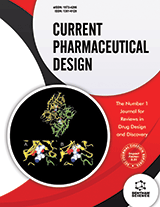Abstract
The global volume of skin damage or injuries has major healthcare implications and, accounts for about half of the world's annual expenditure in the healthcare sector. In the last two decades, tissue-engineered skin constructs have shown great promise in the treatment of various skin-related disorders such as deep burns and wounds. The treatment methods for skin replacement and repair have evolved from utilization of autologous epidermal sheets to more complex bilayered cutaneous tissue engineered skin substitutes. However, inadequate vascularization, lack of flexibility in drug/growth factors loading and inability to reconstitute skin appendages such as hair follicles limits their utilization for restoration of normal skin anatomy on a routine basis. Recent advancements in cutting-edge technology from stem cell biology, nanotechnology, and various vascularization strategies have provided a tremendous springboard for researchers in developing and manipulating tissue engineered skin substitutes for improved skin regeneration and wound healing. This review summarizes the overview of skin tissue engineering and wound healing. Herein, developments and challenges of various available biomaterials, cell sources and in vitro skin models (full thickness and wound healing models) in tissue-engineered skin research are discussed. Furthermore, central to the discussion is the inclusion of various innovative strategies starting from stem cells, nanotechnology, vascularization strategies, microfluidics to three dimensional (3D) bioprinting based strategies for generation of complex skin mimics. The review then moves on to highlight the future prospects of advanced construction strategies of these bioengineered skin constructs and their contribution to wound healing and skin regeneration on current practice.
Keywords: Tissue engineered skin, wound healing, skin substitutes, biomaterial, seed cells, vascularization.
Current Pharmaceutical Design
Title:Tissue Engineered Skin and Wound Healing: Current Strategies and Future Directions
Volume: 23 Issue: 24
Author(s): Nandana Bhardwaj*, Dimple Chouhan and Biman B. Mandal
Affiliation:
- DBT BioCARe Scientist, Institute of Advanced Study in Science and Technology (IASST), Guwahati,India
Keywords: Tissue engineered skin, wound healing, skin substitutes, biomaterial, seed cells, vascularization.
Abstract: The global volume of skin damage or injuries has major healthcare implications and, accounts for about half of the world's annual expenditure in the healthcare sector. In the last two decades, tissue-engineered skin constructs have shown great promise in the treatment of various skin-related disorders such as deep burns and wounds. The treatment methods for skin replacement and repair have evolved from utilization of autologous epidermal sheets to more complex bilayered cutaneous tissue engineered skin substitutes. However, inadequate vascularization, lack of flexibility in drug/growth factors loading and inability to reconstitute skin appendages such as hair follicles limits their utilization for restoration of normal skin anatomy on a routine basis. Recent advancements in cutting-edge technology from stem cell biology, nanotechnology, and various vascularization strategies have provided a tremendous springboard for researchers in developing and manipulating tissue engineered skin substitutes for improved skin regeneration and wound healing. This review summarizes the overview of skin tissue engineering and wound healing. Herein, developments and challenges of various available biomaterials, cell sources and in vitro skin models (full thickness and wound healing models) in tissue-engineered skin research are discussed. Furthermore, central to the discussion is the inclusion of various innovative strategies starting from stem cells, nanotechnology, vascularization strategies, microfluidics to three dimensional (3D) bioprinting based strategies for generation of complex skin mimics. The review then moves on to highlight the future prospects of advanced construction strategies of these bioengineered skin constructs and their contribution to wound healing and skin regeneration on current practice.
Export Options
About this article
Cite this article as:
Bhardwaj Nandana *, Chouhan Dimple and Mandal B. Biman, Tissue Engineered Skin and Wound Healing: Current Strategies and Future Directions, Current Pharmaceutical Design 2017; 23 (24) . https://dx.doi.org/10.2174/1381612823666170526094606
| DOI https://dx.doi.org/10.2174/1381612823666170526094606 |
Print ISSN 1381-6128 |
| Publisher Name Bentham Science Publisher |
Online ISSN 1873-4286 |
 188
188 59
59 2
2
- Author Guidelines
- Bentham Author Support Services (BASS)
- Graphical Abstracts
- Fabricating and Stating False Information
- Research Misconduct
- Post Publication Discussions and Corrections
- Publishing Ethics and Rectitude
- Increase Visibility of Your Article
- Archiving Policies
- Peer Review Workflow
- Order Your Article Before Print
- Promote Your Article
- Manuscript Transfer Facility
- Editorial Policies
- Allegations from Whistleblowers
- Announcements


























